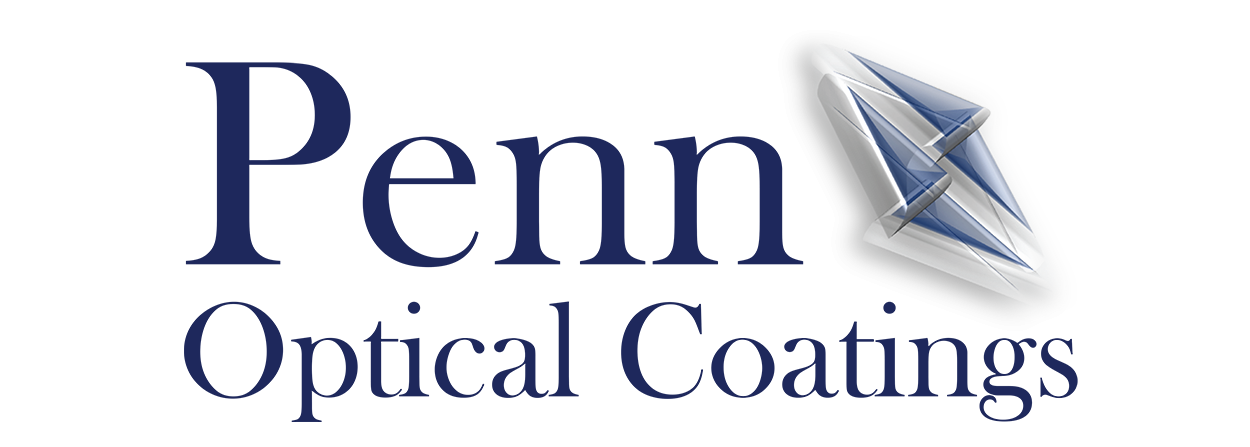Optical coating science is not dark magic, but it is a highly specialized, and sometimes high-risk, part of the optical manufacturing process. This series will break it down and provide optics companies and optics buyers with practical considerations for choosing an optical coating partner.
Catalog optics companies often need to coat small volumes of varying optics. What is the secret sauce to this?
Small volume, high mix—our operation is designed to handle this type of mix from the get-go. Penn Optical Coatings started out as a small-volume coatings company, and we continue to serve a lot of stock optics catalog companies. Having the right tooling matters. We have an exceptional amount of tooling to fit any mix in a chamber at the same time for the same coating. We have standardized many of the coating recipes so we don’t reinvent the wheel every time. Also, our coating chambers are set up to run the same recipes with minimal modifications machine to machine. This allows us to place coatings in our schedule in any machine we want, improving consistency and turnaround time for the customer. For repeat business on standard work, we offer standard pricing, eliminating the time for quoting. Customers have pricing in their set-up and can speed up orders.
The coating can make or break an optic, which makes quality assurance a critical part of the optical coating process. What metrology and testing are important for coatings?
Look for ISO certification and, depending on the application, MIL-standard testing capabilities. Penn Optical Coatings is ISO certified, so our quality infrastructure is robust and continuously improving. When it comes to testing, we test every single coating run for transmission and reflectivity, using spectrometers measuring 170nm to over 20 microns, covering UV to long IR, the full range of wavelengths to check transmission properties.
We check every single object 100% at the end of the process to ensure it meets all surface quality specs, scratches, and thickness specifications.
Some customers ask for coated optics test reports so they can verify results internally. With custom optics, we also test a minimum of adhesion and abrasion properties for durability. For other applications including military, we can do salt, fog, humidity, so we can meet most if not all MIL testing as they apply to coatings. We have a MIL testing setup in-house for environmental durability, as we are occasionally asked to do temperature cycling, humidity, salt/fog to ensure performance at sea. [Link to MIL blog]
How do I specify a custom optic coating?
Some of the drivers for custom coatings are optic diameter, transmission and conductivity requirements. While we have ‘recipes’ we’ve developed over the years for the most common kind of coatings, sometimes we need to develop a custom solution.
Two examples come to mind—we developed a proprietary way of getting very uniform coatings across very large objects. There are certain inherent difficulties in coating a large optic uniformly. In many cases, at the center of the optic, it’s very difficult to mask the center point when it’s rotating on its own axis, so it is difficult to modify the thickness of the coating there. We developed a proprietary technique to overcome that, and over the last 10 years, we have coated may optics up to 32 in diameter, some with very tight specifications.
In another project, we had to develop an ITO (Indium Tin Oxide) coating, or a conductive coating that can also transmit. ITO coatings can require a tradeoff between absorption of the metal and the transmission…you’re trying to achieve a coating that will conduct electricity and transmit light, and they are counter to one another. It’s a tricky setup to get just the right parameter and to get low reflectivity. Penn spent several weeks examining all the parameters and identifying which ones are the most important. Over the last 10 years, Penn has provided 100s of ITO designs to customers, and we are particularly adept at developing and producing these coatings.
What are ITO coatings used for?
ITO coatings are used when static electricity must be removed from the outside of the system, such as in aerospace and a number of military applications. Sometimes the optical designer just wants to heat up the optic to prevent condensation on the lens.
How do I ensure the durability of coatings in harsh environments?
It starts with the recipe. The right formula, right set-up, and a rigorous quality assurance process, checking every optic for adhesion and environmental durability.
We recently had to, in a high-volume satellite project that required both very tight optical specifications, and high durability with limited types of coating materials compatible with space, we have been able to achieve a yield greater than 99% over multiple runs, nearly 60,000 optics to date.
What considerations should optical fabricators take into account for consistent coatings, batch to batch?
Planning for a ramp-up to high volume is important from the start. It allows the optical coater to set the parameters appropriately from the first run. Of course, the higher the volume, the more efficient and cost effective. If we have the chamber set up for a specific type, with multiple runs, this will improve consistency. We don’t have to set up and retest for smaller batches, which drives costs. It can be challenging for fabricators, but in the coating world, it really helps contain costs while ensuring consistent optical performance.
Designers should allow enough room for the tooling to hold the optic rather than squeeze all to edge.
